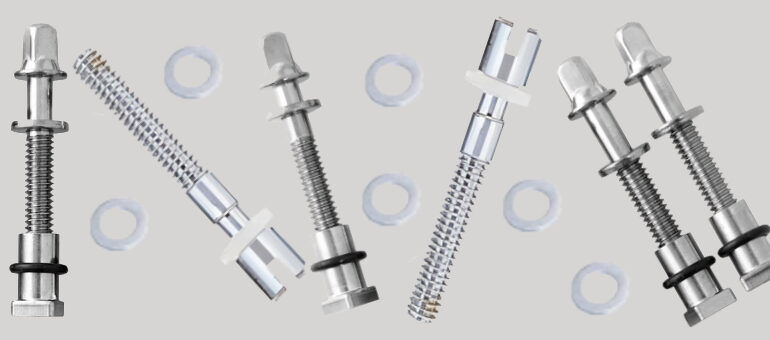Everything You Need To Know About Anodizing Services
- indgirka
- Apr 18, 2024
- 4 min read
Updated: Apr 24, 2024
Introduction:
Anodizing services are essential to many industries because they provide a flexible and efficient way to improve the toughness, appeal, and ability of metal surfaces to withstand corrosion. Anodizing is a common process used to produce durable and attractive coatings on aluminum and other metals, with applications ranging from consumer items and electronics to automotive and aerospace.

We will cover all you need to know about Anodizing Services in this detailed guide, including the steps involved, advantages, uses, and factors to keep with you when choosing a reputable anodizing supplier.
The Anodizing Process:
An electrochemical process called anodizing converts a metal's surface—usually aluminum—into an oxide coating that is resistant to corrosion. The metal surface becomes immersed in a solution of electrolytes and is exposed to an electric current during the process. This results in an oxidation reaction that coats the metal's surface in an aluminum oxide layer. It is possible to control the oxide layer's thickness and qualities to get the right texture, color, and hardness.
Types of Anodizing:
There are several types of anodizing processes, each offering unique advantages and characteristics:
1. Type I Anodizing (Chromic Acid Anodizing): This technique provides a thin, non-porous oxide layer with strong resistance to corrosion using chromic acid as the electrolyte. Because type I anodizing performs better in extreme settings, it is commonly used in military and aerospace applications.
2. Type II Anodizing (Sulfuric Acid Anodizing): Sulfuric acid anodizing is the most common type of anodizing and produces thicker oxide layers compared to Type I. This process offers improved corrosion resistance, abrasion resistance, and color options, making it suitable for a wide range of applications in industries such as automotive, architectural, and consumer goods.
3. Type III Anodizing (Hardcoat Anodizing): Type III anodizing, also referred to as sulfuric acid hardcoat or hardcoat anodizing, creates a thick, dense oxide layer with exceptional hardness and wear resistance. Applications needing exceptional durability and abrasion resistance, like industrial machinery, weapons, and military gear, frequently use this method.
Benefits of Anodizing:
Anodizing offers numerous benefits that make it an attractive choice for various applications:
1. Corrosion Resistance: Anodized parts are ideal for outdoor and shipping environments because of their excellent corrosion resistance, which can be attributed to the protective oxide layer that forms during the anodizing process.
2. Durability: Metal components have a longer service life and require less maintenance due to anodized coatings, which are robust, resilient, and abrasion-resistant.
3. Aesthetic Options: Anodizing gives designers a multitude of color and finish options, such as matte, satin, and brilliant, allowing them to meet branding specifications and desired aesthetics.
4. Electrical Insulation: Anodized coatings can provide electrical insulation, which qualifies them for use in applications requiring electrical isolation and electronic components.
5. Environmental friendliness: Compared to other surface finishing techniques, anodizing produces the least amount of trash and uses the least amount of energy.
Applications of Anodizing:
Anodizing finds applications across various industries and sectors:
1. Aerospace: Anodized aluminum is lightweight, durable, and resistant to corrosion, it is used in engine parts, interiors, and aircraft structures.
2. Automotive: Anodized aluminum parts provide visual appeal, corrosion protection, and wear resistance and are used in vehicle trim, wheels, and engine components.
3. Electronics: Their corrosion resistance, electrical isolation, and thermal conductivity, anodized aluminum enclosures and heat sinks are frequently employed in electronic devices and components.
4. Architecture: Due to its weather resistance, low maintenance requirements, and aesthetic adaptability, anodized aluminum panels, cladding, and facades are attractive alternatives in architectural applications.
5. Consumer Goods: The increased durability, scratch resistance, and color possibilities of anodized aluminum products, like cookware, sports equipment, and handheld electronics, are advantageous.
Considerations for Choosing Anodizing Services:
When selecting an anodizing provider, several factors should be considered to ensure quality, reliability, and compatibility with specific requirements:
1. Experience and Expertise: Choose an anodizing supplier who can meet technical specifications and quality standards and has a track record of success in the company's industry.
2. Process Capabilities: Check the provider's ability to handle a range of item sizes, shapes, and volumes as well as their tools and anodizing processes.
3. Quality Control: Verify that the supplier has effective quality control processes in place to keep check and maintain consistent surface polish, thickness, and color consistency in the anodizing results.
4. Certifications and Compliance: To ensure compliance and product integrity, confirm that the supplier follows all applicable industry standards, certifications, and environmental laws.
5. Customer support: From the initial inquiry to the post-treatment services, assess the provider's level of communication, responsiveness, and support for customers during the anodizing process.
Conclusion:
Anodizing Services provide an affordable and flexible way to improve the functionality, robustness, and appearance of metal parts in a variety of sectors. To maximize the value of anodized products and achieve desired results, it is essential to understand the anodizing process, benefits, applications, and things that matter when choosing a reputable anodizing provider. Companies can improve the quality, durability, and competitiveness of their products in today's tough market environment by utilizing the advantages of anodizing and collaborating with a reliable anodizing provider.






Comments